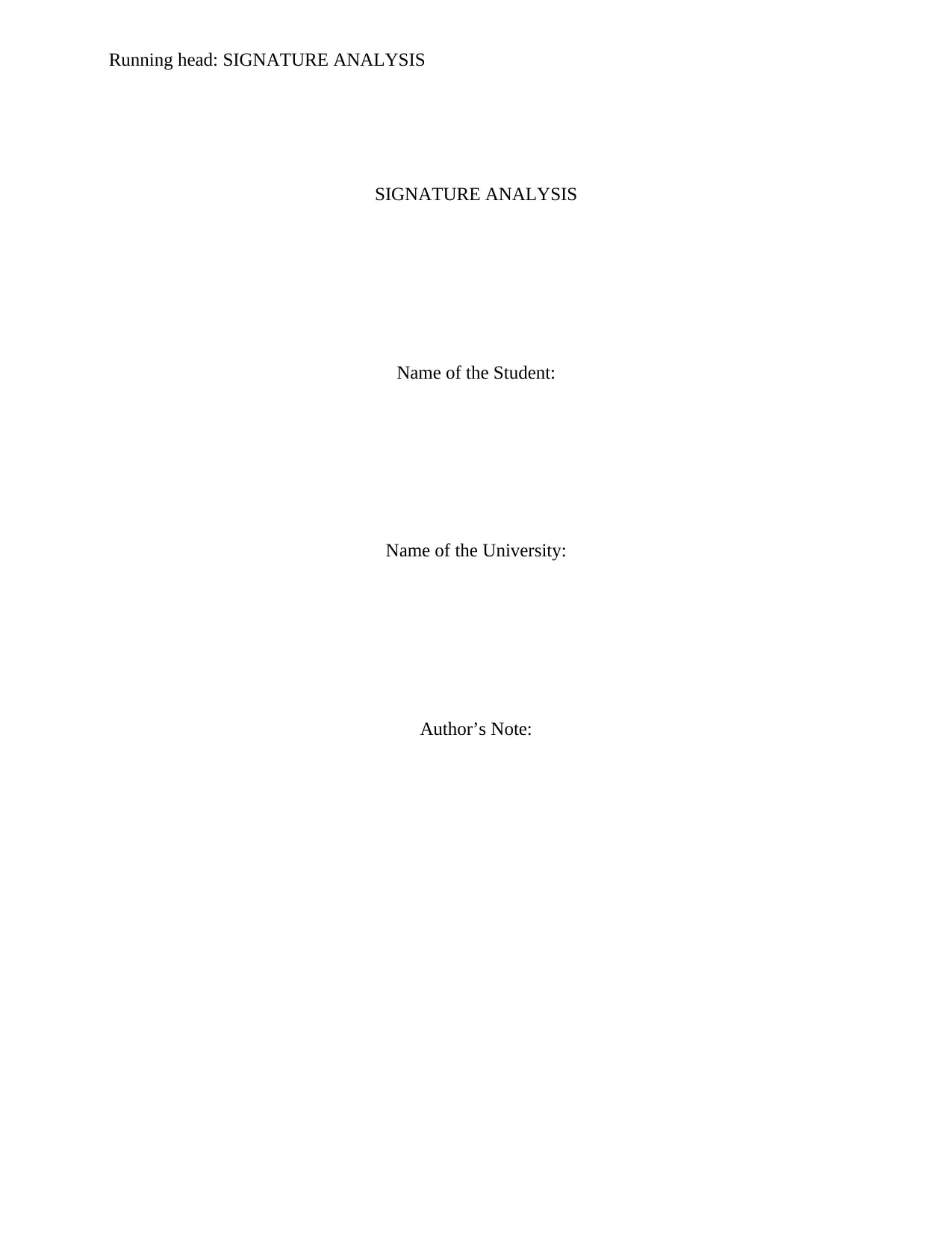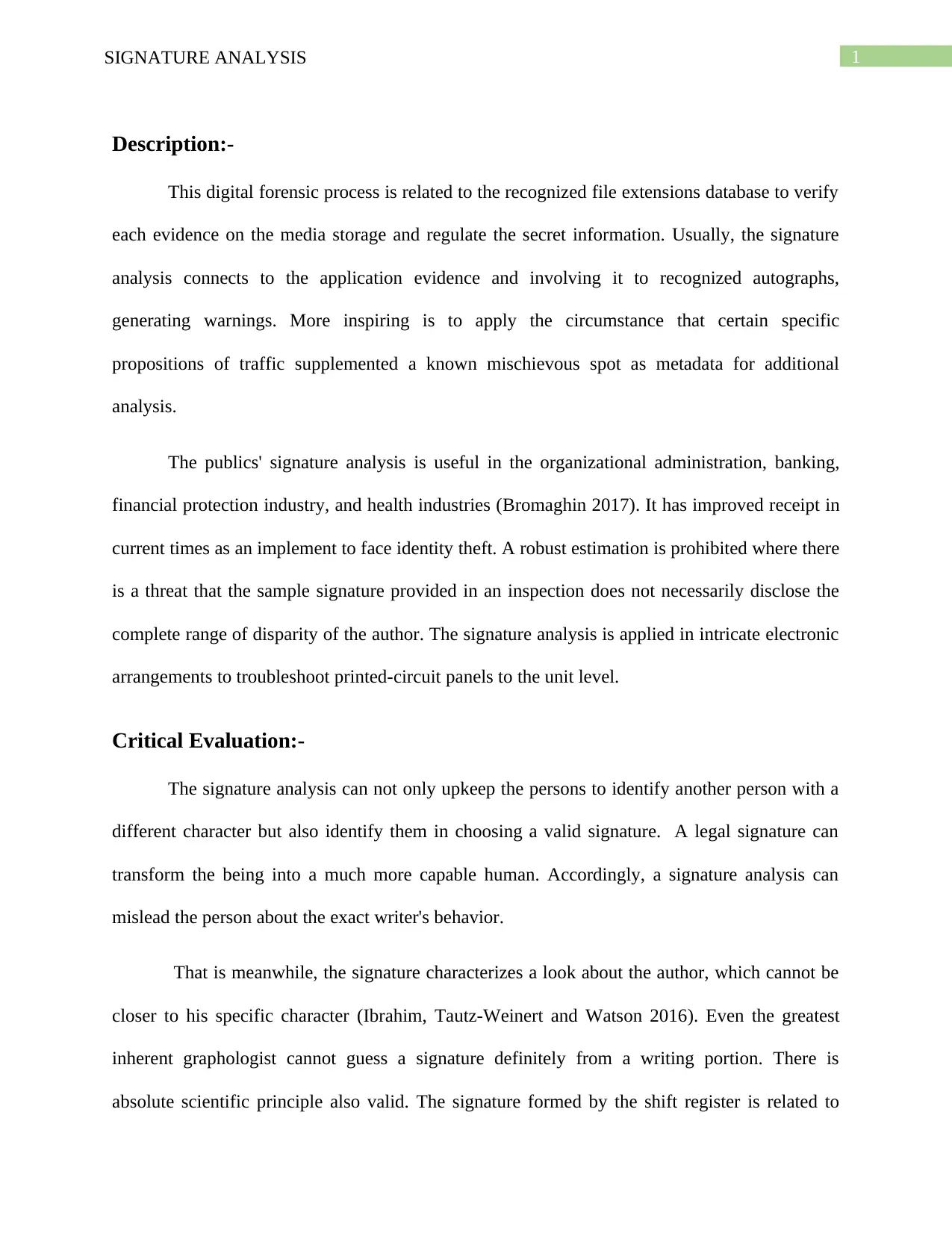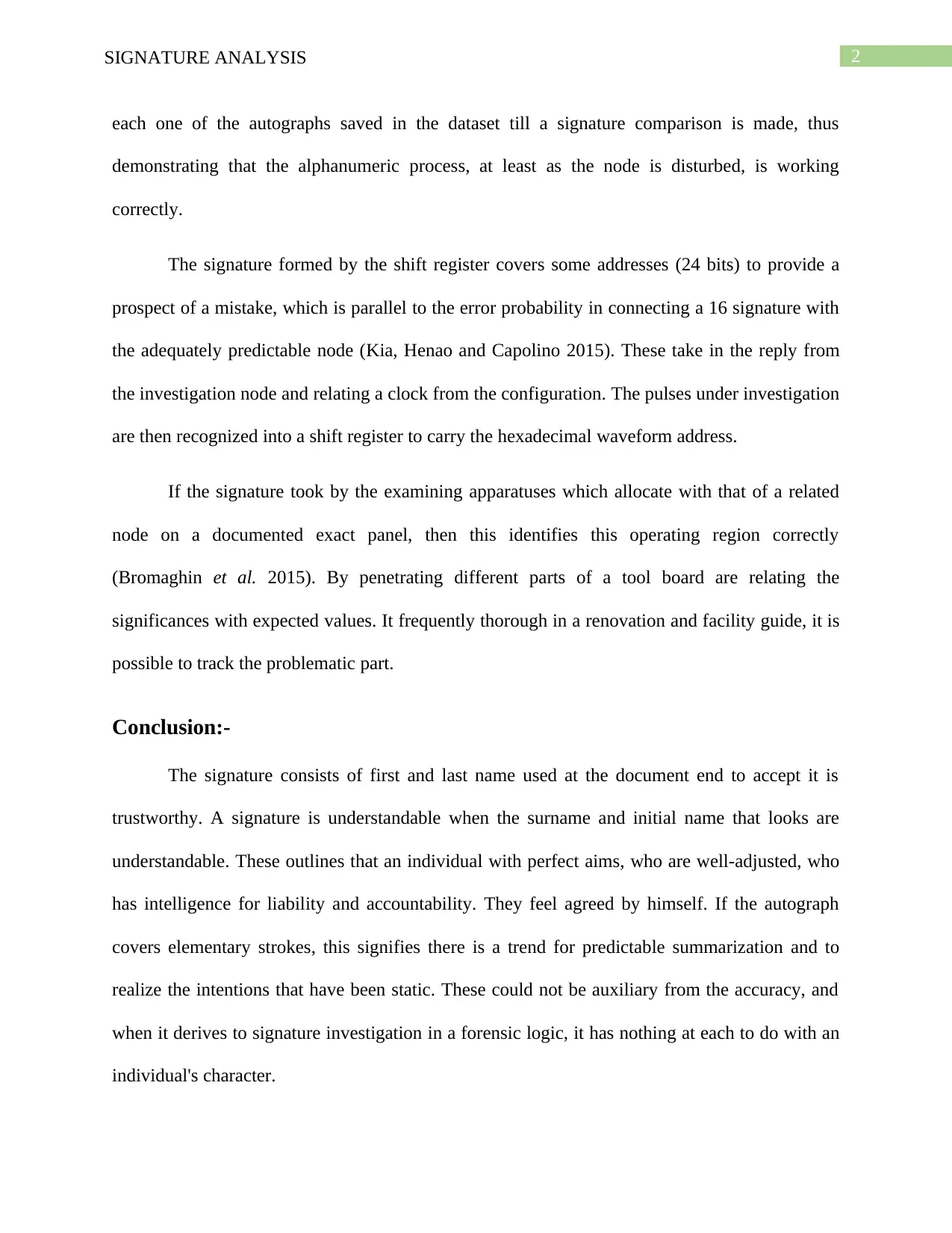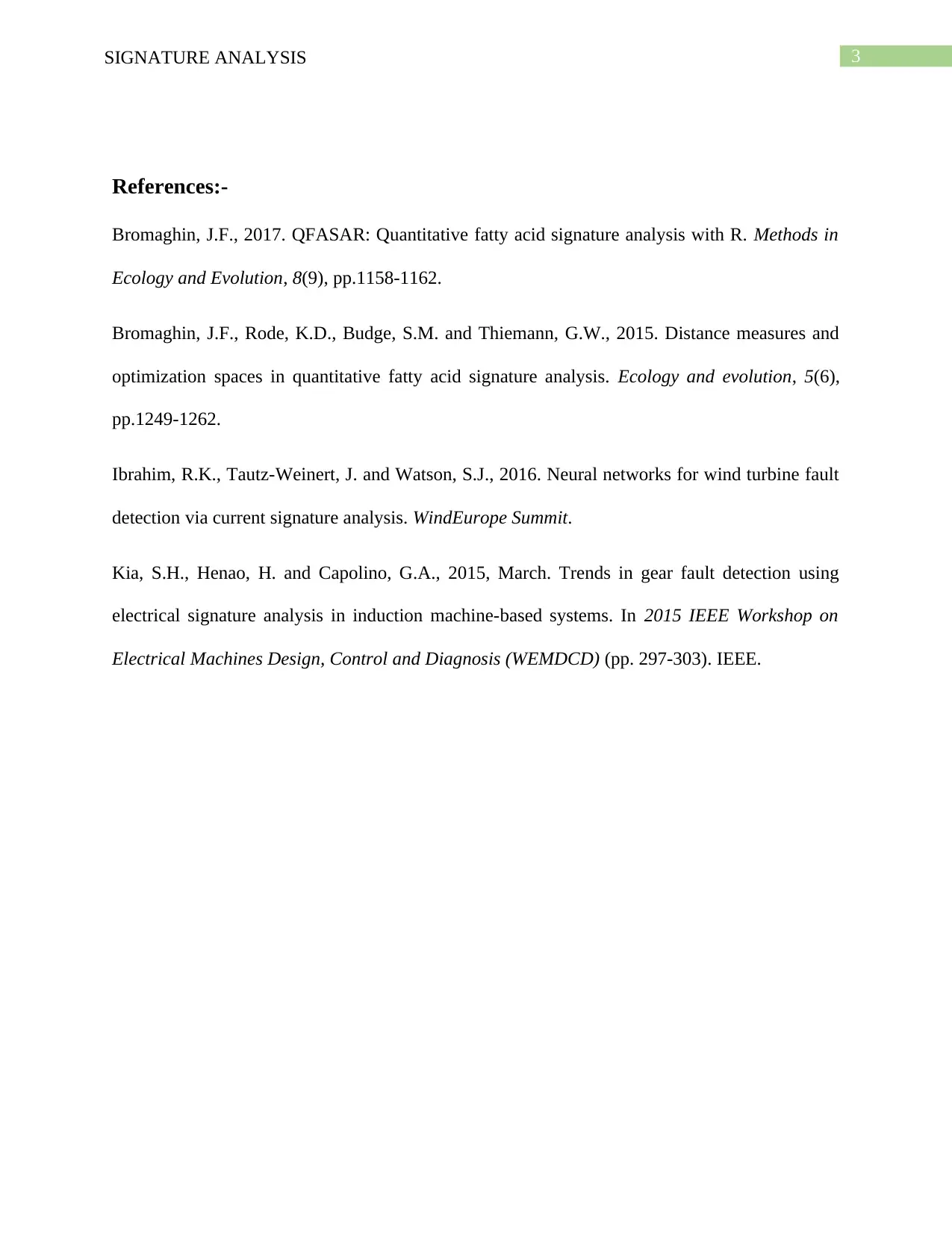Signature Analysis in Digital Forensics: A Comprehensive Report
VerifiedAdded on 2022/08/29
|4
|791
|27
Report
AI Summary
This report explores signature analysis within the realm of digital forensics, outlining its function in verifying digital evidence and regulating sensitive information. It delves into the application of signature analysis in various sectors, including organizational administration, banking, and health industries, highlighting its role in combating identity theft. The report evaluates the process's limitations, particularly concerning the potential for incomplete representation of an author's characteristics. It discusses the use of signature analysis in complex electronic systems, such as troubleshooting printed-circuit panels, and explains the technical aspects, including the use of shift registers for signature comparison. The conclusion emphasizes the importance of signatures in document authentication and their connection to an individual's intentions. The report references several academic sources, including studies on quantitative fatty acid signature analysis, neural networks for fault detection, and trends in gear fault detection using electrical signature analysis. The report highlights that the alphanumeric process at least as the node is disturbed, is working correctly.
1 out of 4







![[object Object]](/_next/static/media/star-bottom.7253800d.svg)